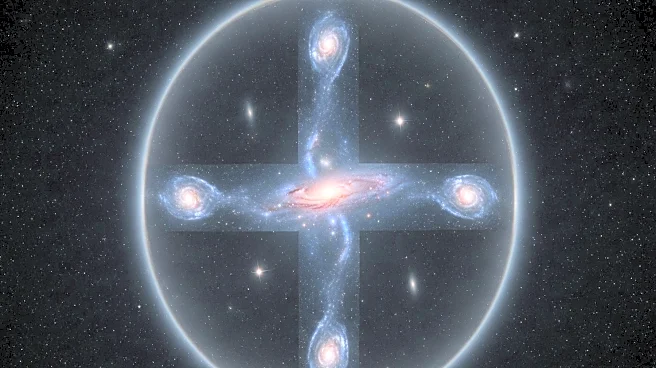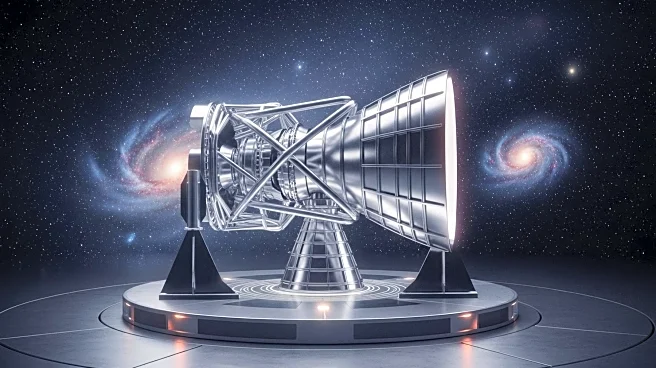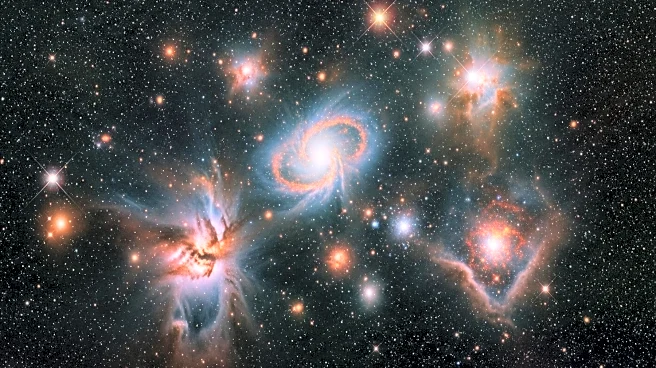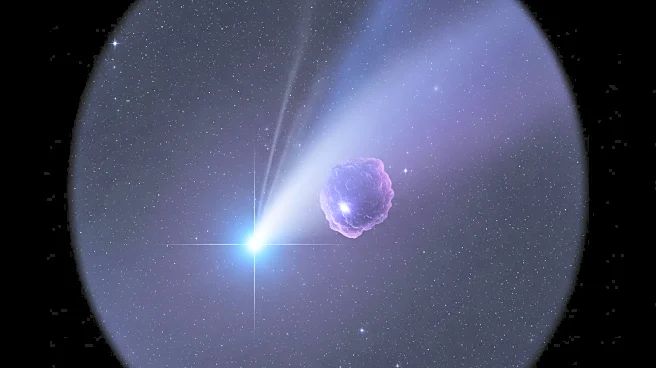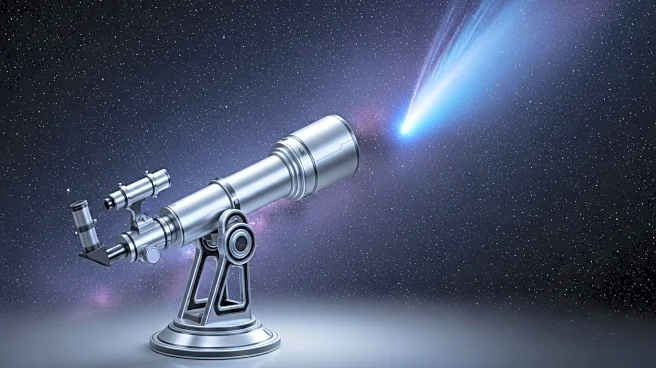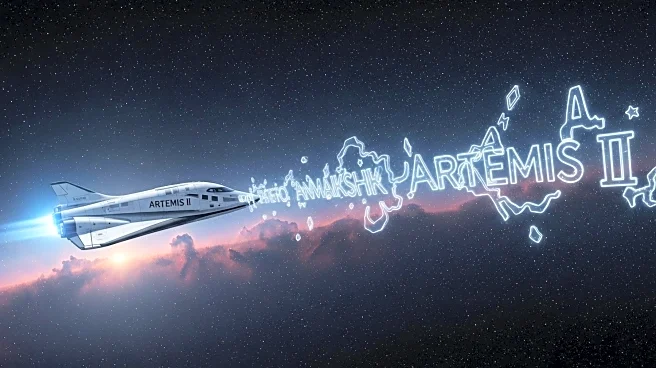What's Happening?
In a groundbreaking astronomical event, scientists have successfully captured the birth of a new planet, marking a historic moment in the study of celestial formations. The planet, named WISPIT 2b, is a gas giant five times the size of Jupiter, forming nearly 400 light-years from Earth. This discovery, published in the Astrophysical Journal Letters, provides unprecedented insights into the process of planetary formation. The planet is emerging from a protoplanetary disk surrounding the young star WISPIT 2, which is approximately 5 million years old. Using the Very Large Telescope in Chile, astronomers observed a gap in the disk, indicating the gravitational influence of the forming planet. This observation is a significant achievement, offering a rare glimpse into the early stages of planetary development.
Why It's Important?
The capture of WISPIT 2b's formation is a monumental advancement in astronomy, challenging existing models of planetary development and inspiring new scientific inquiries. This discovery has the potential to significantly enhance our understanding of how planets, including those in our own Solar System, form and evolve. The ability to observe a planet in the process of forming provides a powerful tool for testing hypotheses about planetary origins. This event not only satisfies scientific curiosity but also encourages the refinement of theoretical models, potentially leading to new insights into the diversity of planetary systems across the universe.
What's Next?
As scientists continue to monitor WISPIT 2b's development, further observations will aim to confirm the planet's mass and examine its atmospheric composition. These data will be crucial in understanding the conditions that lead to the formation of gas giants. The ongoing study of WISPIT 2b will likely influence future research methodologies and technologies, pushing the boundaries of what is possible in planetary science. This discovery also raises questions about the potential for life beyond Earth, as understanding the formation of planets is key to identifying habitable environments in the cosmos.
Beyond the Headlines
The observation of WISPIT 2b's birth is not only a scientific milestone but also a philosophical one, prompting deeper questions about humanity's place in the universe. As we continue to explore distant stars and their planets, we gain insights into the complex processes that shape the cosmos. This knowledge inspires new generations of scientists to push the boundaries of discovery, potentially leading to breakthroughs in understanding life's potential beyond Earth.

